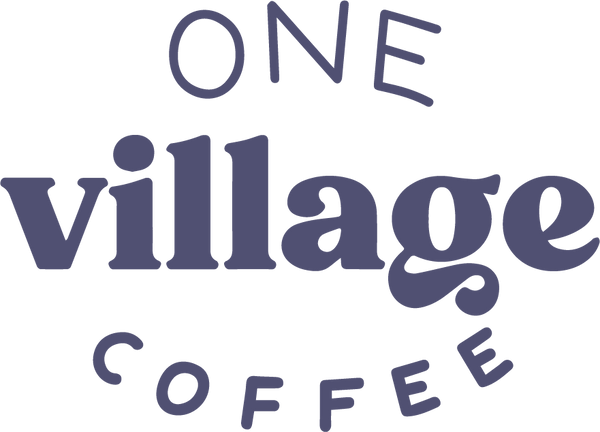Let’s talk coffee freshness. When you think about coffee freshness, you probably look at the roast date. Makes sense—no one wants stale beans. But roasters like us also ask another question: when was this coffee harvested? Both factors—the harvest date and the roast date—play a huge role in how your coffee tastes. Old, out-of-season coffee can taste flat, muted, or just plain boring. So how do we make sure the green coffee we roast is always fresh? Let’s break it down.
Fade
If you ever see a coffee company market their coffee as aged, please know this is a marketing technique used to try and sell old green coffee that sat around in the roastery for too long due to the company purchasing too much or mismanaging their inventory. Coffee is not like wine, it does not get better with age. Instead, it loses sweetness and acidity, leaving dull, papery, woody, or dusty flavors behind. Sometimes it even tastes like burlap. So, if that’s your thing then look for “aged” coffee. Here at One Village, we try to avoid it at all costs.
Freshness

Roasters in places like Colombia, Guatemala, and Brazil have one big advantage over us, and that is their ability to roast super fresh coffees. For us, green coffee usually has to travel across the ocean and through a few warehouses before reaching our roastery. This long journey requires that the coffee is dried properly and stabilized at the right moisture content before being shipped. When it’s done right, green coffee can stay fresh for many months—sometimes close to a year.
So how do we plan our sourcing to keep things tasting lively? It all comes down to timing harvests around the globe.
Central America
These origins are north of the equator and the harvest begins around November - December. We start to see these coffees shipping as early as February, but we plan around a May arrival. We source coffees from Mexico, Honduras, Costa Rica and Guatemala. The goal here is to buy enough coffee to get us from June - January. This way, our Central American coffees always line up with their natural cycle of freshness.
South America

We typically source from Peru, Colombia and Brazil. Peru’s harvest begins shipping to us around August, and we plan our buying to cover December through June.
Colombia is unique because of its geography. Colombia is known for harvesting year round because of the diverse range of regions here. Many farms here harvest twice a year, which means we can bring in fresh shipments about three times annually. This consistency makes Colombian coffees a cornerstone in our lineup.
Brazil, meanwhile, ships fresh coffee in Q3 and Q4. Historically, Brazilian coffees have been staples in our Nordico and Foundations blends (this might change due to 50% tariffs). We keep the coffee fresh by booking modest amounts initially, and then adding on to our bookings later in the year from coffees that ship out of Brazil in Q1/Q2 of the year – there are regions and farms here that harvest earlier in the year.
Africa
Our main source of coffee from Africa is Ethiopia. The harvest here aligns with Central American coffees. Rwanda, Burundi, and Uganda coffees align more with South American coffees due to being in the southern hemisphere. When we buy Ethiopian coffees we pay close attention to the physical attributes of the green coffee – the moisture content. These coffees have proven to have the best shelf lives when all goes right, so we don’t have much of an issue carrying these for the entire year.

Conclusion
Over the years of cupping samples, we’ve come across plenty of faded coffees. Sometimes it’s just age, and other times beans arrive tasting flat even though they’re technically “fresh.” That’s a huge risk when buying direct and importing on your own. Instead, we work with importers on contracts that allow us to reject any coffee that arrives dull or doesn’t meet our specifications. At that point, the responsibility shifts to the importer—not us. Those coffees are typically sold at a discount to commercial roasters or “specialty” roasters looking to save a dime. That’s not how we operate at One Village. We do everything we can to deliver you the best, freshest coffee there is!



